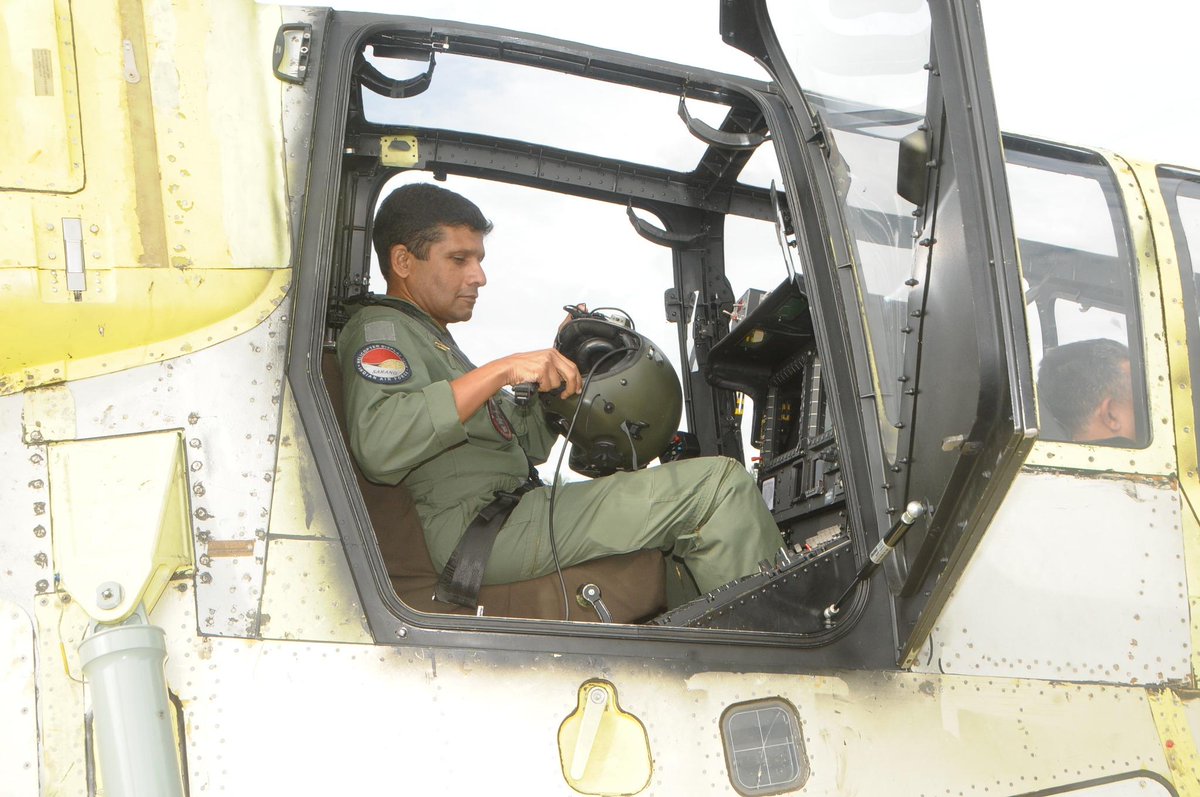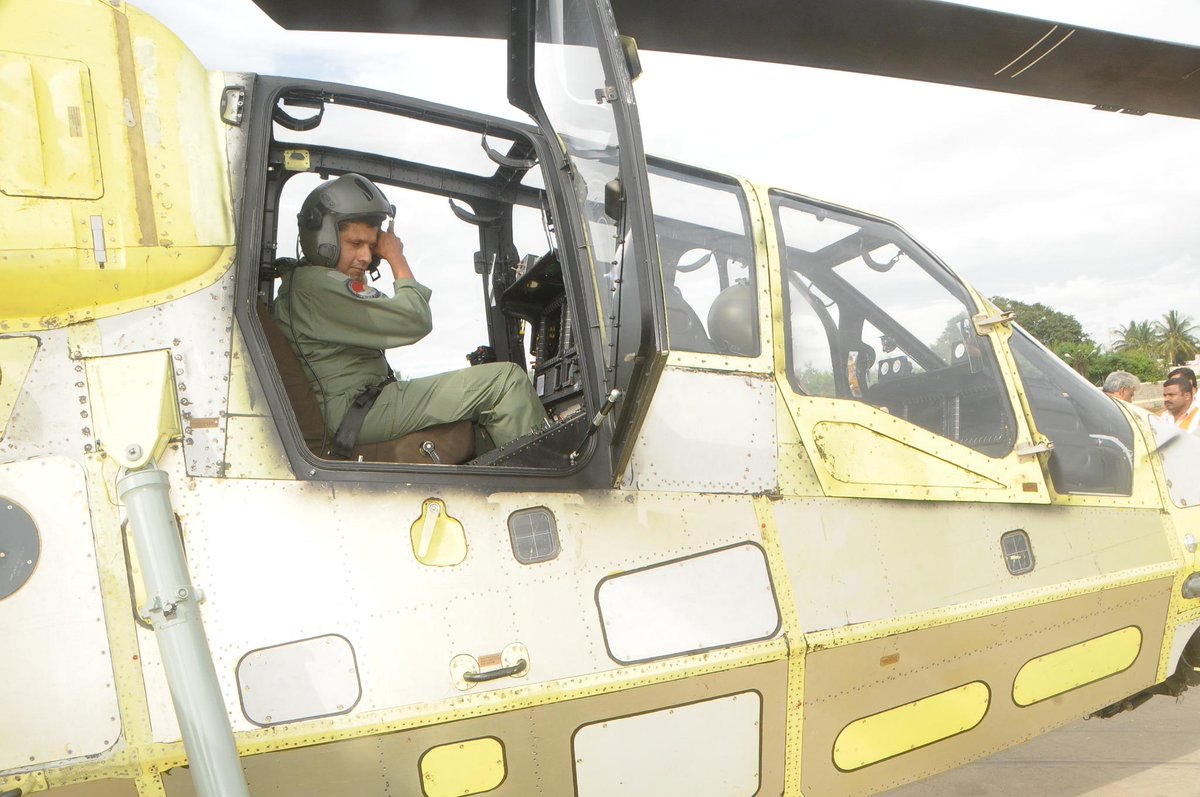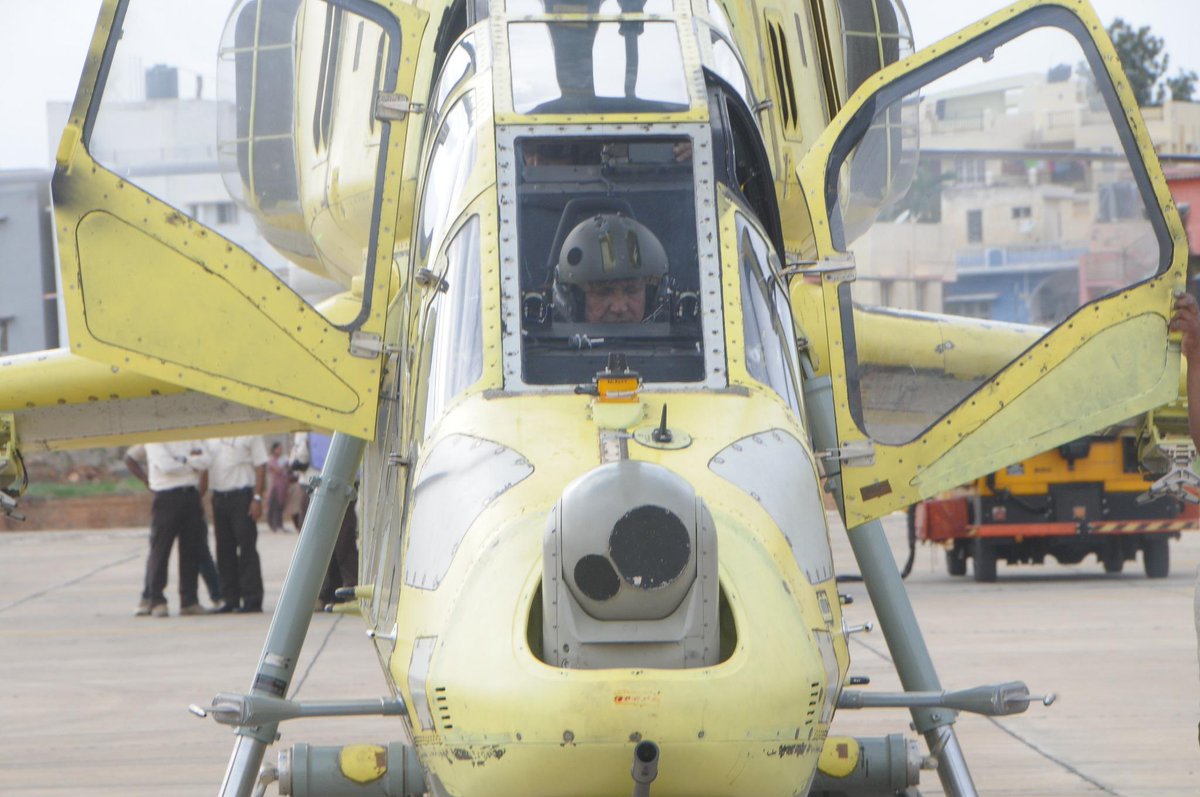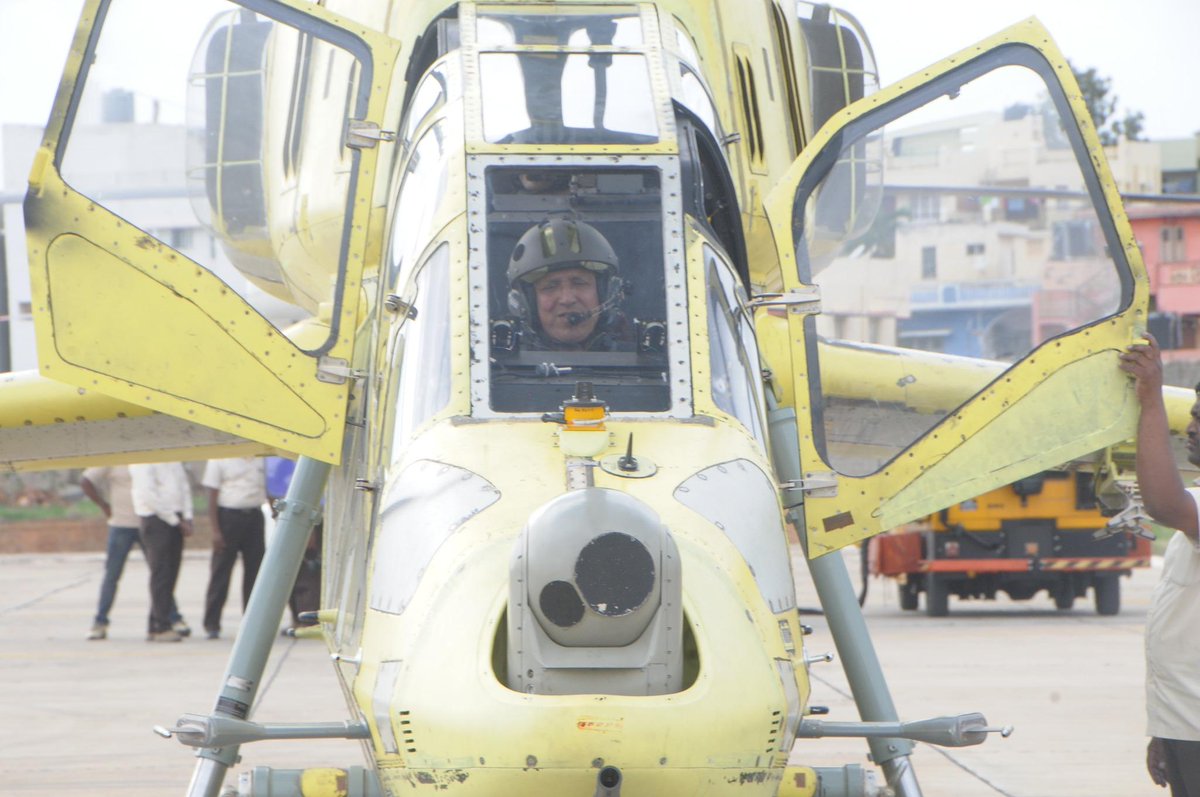indranilroy wrote:But taking aim at those hinges. Why? There are much bigger and more vulnerable areas of a helicopter.
LCH and other Helicopters Discussion Thread
Re: LCH and other Helicopters Discussion Thread
Re: LCH and other Helicopters Discussion Thread
Anantha Krishnan M @writetake
#LCHTD3 Dedicating to all Hari fans [ Grp Capt Hari Nari (Retd) ] out there.


Anantha Krishnan M @writetake
#LCHTD3 Dedicating to all Unni fans [ Wg Cdr Unni Pillai (Retd) ] our there.


Re: LCH and other Helicopters Discussion Thread
Shri Kota garu is like APJ of Indian aeronautics.Shreeman wrote:
credit -- original poster elsewhere.
Re: LCH and other Helicopters Discussion Thread
LCH is also our first full spectrum stealth aircraft. Somehow this is not getting highlighted enough.
Re: LCH and other Helicopters Discussion Thread
One question on the LCH: is the pilot in the front seat or is it the gunner ?
Re: LCH and other Helicopters Discussion Thread
Why? Is there a single clear benefit to retractable landing gear other than low RCS?skekatpuray wrote:Would it had been an overkill to have retractable landing gears?
The pilot is in the front seat.srin wrote:One question on the LCH: is the pilot in the front seat or is it the gunner ?
Last edited by Mihir on 15 Nov 2014 00:10, edited 3 times in total.
-
Raveen
- BRFite
- Posts: 841
- Joined: 18 Jun 2008 00:51
- Location: 1/2 way between the gutter and the stars
- Contact:
Re: LCH and other Helicopters Discussion Thread
[quote="indranilroy
@Raveen
Why would they put a fairing if it is draggier than what they surround?[/quote]
Exactly my question
@Raveen
Why would they put a fairing if it is draggier than what they surround?[/quote]
Exactly my question
-
Raveen
- BRFite
- Posts: 841
- Joined: 18 Jun 2008 00:51
- Location: 1/2 way between the gutter and the stars
- Contact:
Re: LCH and other Helicopters Discussion Thread
Lower dragMihir wrote:What? Is there a single clear benefit to retractable landing gear other than low RCS?skekatpuray wrote:Would it had been an overkill to have retractable landing gears?
Re: LCH and other Helicopters Discussion Thread
Because it is not!Raveen wrote:Exactly my questionindranilroy wrote: @Raveen
Why would they put a fairing if it is draggier than what they surround?
Re: LCH and other Helicopters Discussion Thread
Not a clear benefit at the speeds a helicopter is expected to operate. It could easily be offset by increased weight.Raveen wrote:Lower dragMihir wrote:What? Is there a single clear benefit to retractable landing gear other than low RCS?
Re: LCH and other Helicopters Discussion Thread
Duplicate
Last edited by Mihir on 15 Nov 2014 04:57, edited 1 time in total.
-
member_28840
- BRFite
- Posts: 109
- Joined: 11 Aug 2016 06:14
Re: LCH and other Helicopters Discussion Thread
@indranil
thanks for the reply and the photos. interesting to hear the Dhruv is getting a ducted tail rotor.
thanks for the reply and the photos. interesting to hear the Dhruv is getting a ducted tail rotor.
-
Raveen
- BRFite
- Posts: 841
- Joined: 18 Jun 2008 00:51
- Location: 1/2 way between the gutter and the stars
- Contact:
Re: LCH and other Helicopters Discussion Thread
Doesn't meet the eye test - one strut versus a very boxy looking fairing...but if you say so.indranilroy wrote:Because it is not!Raveen wrote: Exactly my question
-
Raveen
- BRFite
- Posts: 841
- Joined: 18 Jun 2008 00:51
- Location: 1/2 way between the gutter and the stars
- Contact:
Re: LCH and other Helicopters Discussion Thread
Yet they made all these other changes to reduce drag and increase lift...and what speeds are you thinking this thing is going to operate at that allow sidestepping the rules of areo?Mihir wrote:Not a clear benefit at the speeds a helicopter is expected to operate. It could easily be offset by increased weight.Raveen wrote: Lower drag
Re: LCH and other Helicopters Discussion Thread
I have no doubt that the fairing has a lower drag than the landing gear structure. I think the question is why is it not in the shape of an aerofoil. Well the bottom part cannot have a tapered edge because it has to have an opening for the play in the landing gear. I don't know why the top part does not have a tapered edge. By the way, I did not realize earlier that the fairing for the pylons have a tapered edge.

As I said earlier, the main landing gear has to absorb a lot of stress in the case of a crash. Making it retractable makes it highly complicated. HAL definitely knows how to make retractable grads for ALH.


As I said earlier, the main landing gear has to absorb a lot of stress in the case of a crash. Making it retractable makes it highly complicated. HAL definitely knows how to make retractable grads for ALH.

Re: LCH and other Helicopters Discussion Thread
Raveen wrote:Yet they made all these other changes to reduce drag and increase lift
What changes have they made to reduce drag? I don't see anything significant apart from the tail gear fairing. And that fairing could have been put there for reasons other than reducing drag, for all we know. What I do know is that a big challenge facing the design team was weight reduction; I'm not sure how a heavier retractable landing gear helps with that.
As for increased lift, they obviously thought that it was worth the additional induced drag. Unless I am missing something.
Chaiwallah info onlee, but the LCH is not being designed to fly at supersonic or high subsonic speeds.Raveen wrote:...and what speeds are you thinking this thing is going to operate at that allow sidestepping the rules of areo?
Re: LCH and other Helicopters Discussion Thread
There is another consideration in this weight vs drag equation. Though top speed in the plains may benefit from lower drag, hovering at higher altitudes suffers from the additional weight.
-
member_28840
- BRFite
- Posts: 109
- Joined: 11 Aug 2016 06:14
Re: LCH and other Helicopters Discussion Thread
Look at the shape of how the belly smoothly tapers into the tail and how it meets the horizontal stabilizer.indranilroy wrote:
IIRC a rod shape will cause a vortex or at the least turbulent airflow. Therefore the fairing may have been introduced there to help with stability during maneuvers rather than a weight vs drag thing.
Re: LCH and other Helicopters Discussion Thread
@indranilroy, is there a public source on fenestrons for Dhruv? How old is this news and what's the status?
-
Shreeman
- BRF Oldie
- Posts: 3762
- Joined: 17 Jan 2007 15:31
- Location: bositiveneuj.blogspot.com
- Contact:
Re: LCH and other Helicopters Discussion Thread
some observations by an ignoramus: this helicopter (TD3) has been flying for a while before this public display. Even so, it is ridiculous to do this with packed stands of 1. people and 2. dhruvs.
That one fire truck will not do squat if something did go wrong and there isnt a safety cordon in sight. Dozens of HAL employees are wandering around clearly not needed for actual flight prep.
The show off ground level hover could have been done on a runway and still shown to employees live on a large screen better than they saw with their eyes. To do this with stands full of aircraft and people is clearly not intended to progress a test flight plan.
Why the HAL stands are so choked full of dhruvs of every description is another good question. There must be 20 helicopters sitting around. Is there a good reason why you would have an year's mnanufacturing sitting idle like this?
That one fire truck will not do squat if something did go wrong and there isnt a safety cordon in sight. Dozens of HAL employees are wandering around clearly not needed for actual flight prep.
The show off ground level hover could have been done on a runway and still shown to employees live on a large screen better than they saw with their eyes. To do this with stands full of aircraft and people is clearly not intended to progress a test flight plan.
Why the HAL stands are so choked full of dhruvs of every description is another good question. There must be 20 helicopters sitting around. Is there a good reason why you would have an year's mnanufacturing sitting idle like this?
Re: LCH and other Helicopters Discussion Thread
Is it? This is the first time I am reading about it.Aditya G wrote:LCH is also our first full spectrum stealth aircraft. Somehow this is not getting highlighted enough.
-
Neela
- BRF Oldie
- Posts: 4138
- Joined: 30 Jul 2004 15:05
- Location: Spectator in the dossier diplomacy tennis match
Re: LCH and other Helicopters Discussion Thread
Is there a military safety thread where the above can go to.?Shreeman wrote:some observations by an ignoramus: this helicopter (TD3) has been flying for a while before this public display. Even so, it is ridiculous to do this with packed stands of 1. people and 2. dhruvs.
That one fire truck will not do squat if something did go wrong and there isnt a safety cordon in sight. Dozens of HAL employees are wandering around clearly not needed for actual flight prep.
The show off ground level hover could have been done on a runway and still shown to employees live on a large screen better than they saw with their eyes. To do this with stands full of aircraft and people is clearly not intended to progress a test flight plan.
Why the HAL stands are so choked full of dhruvs of every description is another good question. There must be 20 helicopters sitting around. Is there a good reason why you would have an year's mnanufacturing sitting idle like this?
Re: LCH and other Helicopters Discussion Thread
well, when coming in for landing the landing gear deployment on civilian airliners does feel like significant drag. Initially when the LCA Navy came out its landing gear looked too sturdy and perhaps they have been optimizing it for weight reduction. Even if we are talking about hot n high conditions for the LCH, while drag may not be an issue weight sure is.
Here is a video of a drop test, do we expect the dynamics to be very different for LCH after the Struts are removed?
Here is a video of a drop test, do we expect the dynamics to be very different for LCH after the Struts are removed?
-
member_22539
- BRF Oldie
- Posts: 2022
- Joined: 11 Aug 2016 06:14
Re: LCH and other Helicopters Discussion Thread
^Actually, are we even really sure that this is indeed the first tests of this kind on the LCH or is it just the first they are willing to publicize?
Re: LCH and other Helicopters Discussion Thread
This is the problem with internet ninjas. They seem to know everything. The other day, I read somewhere that they did not like the new colour scheme  of TD3. In his words, if the bottom of TD3 would be coloured black, it would look like a taxi.
of TD3. In his words, if the bottom of TD3 would be coloured black, it would look like a taxi.
Anyways, the helicopters are parked on the left and the right of the central flight area (marked with solid white lines). Even within these solid lines there are dotted lines to guide the pilots in and out of their parking spots. If the helicopters are in their parking spots and the flying helicopter is in the center of the flying zone, then there is enough clearance between all helicopters, irrespective of their orientation. All flying is done within this central flight area. You will see that the after taking off the LCH moves to this central flying zone before carrying out the other tests. The same when coming in to land, It comes in on this strip and then moves sideways into its parking spot. The chase heli and the army heli also follow this procedure.
P.S. Do you see any HAL employees in the flight zone?!!
Anyways, the helicopters are parked on the left and the right of the central flight area (marked with solid white lines). Even within these solid lines there are dotted lines to guide the pilots in and out of their parking spots. If the helicopters are in their parking spots and the flying helicopter is in the center of the flying zone, then there is enough clearance between all helicopters, irrespective of their orientation. All flying is done within this central flight area. You will see that the after taking off the LCH moves to this central flying zone before carrying out the other tests. The same when coming in to land, It comes in on this strip and then moves sideways into its parking spot. The chase heli and the army heli also follow this procedure.
P.S. Do you see any HAL employees in the flight zone?!!
Re: LCH and other Helicopters Discussion Thread
100 pages, time for a new thread.
Re: LCH and other Helicopters Discussion Thread
Is there line by line comparison between LCH and Harbin z-19 ?
Re: LCH and other Helicopters Discussion Thread
Thread locked. Question moved to current thread.
